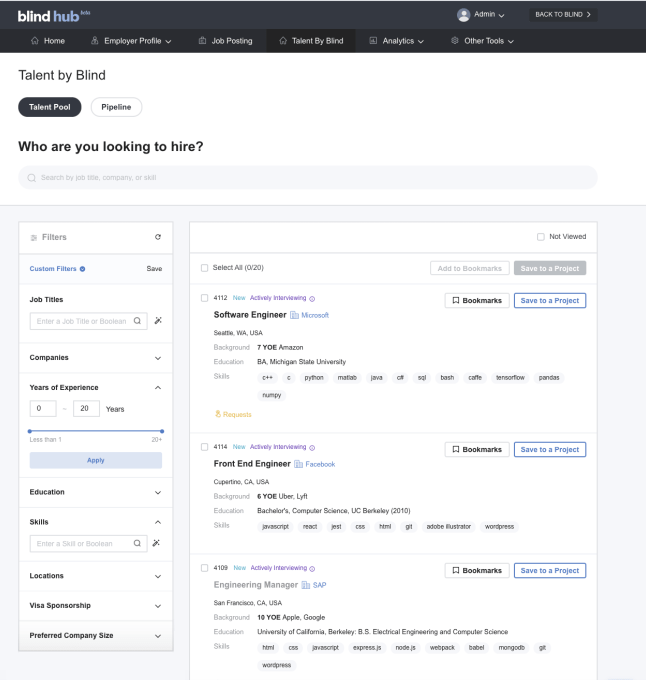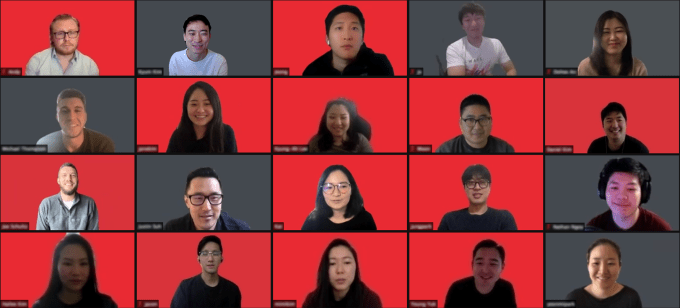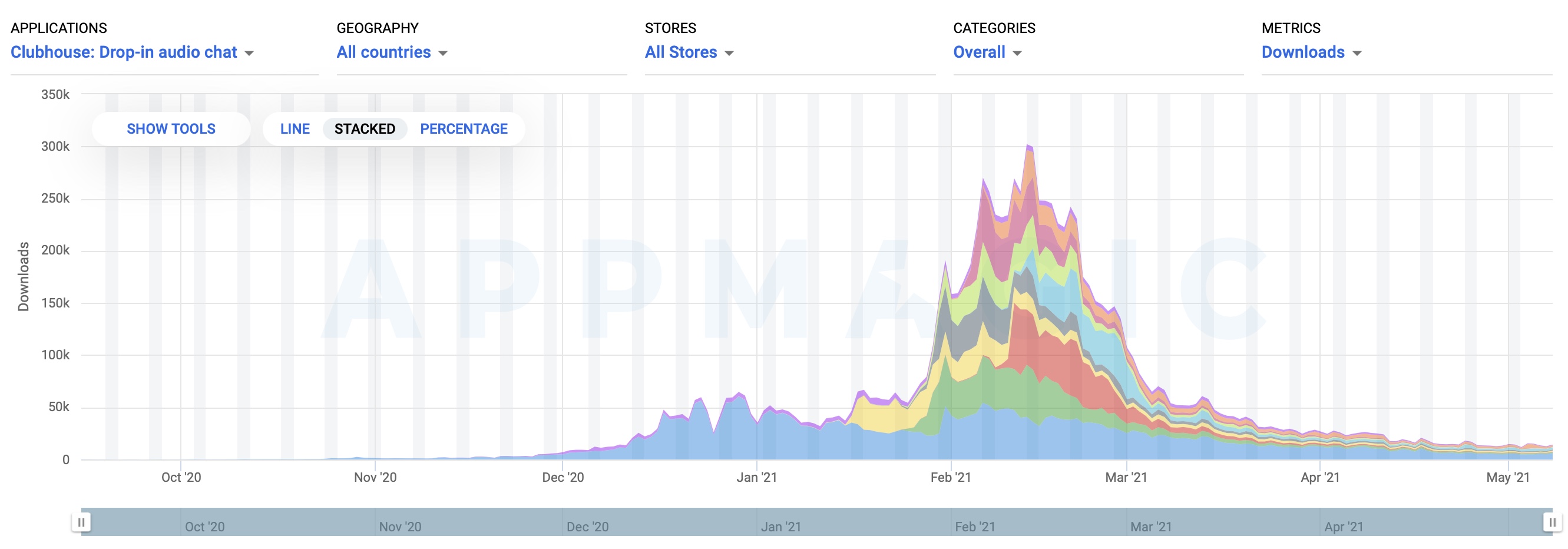- May 10, 2021
- by:
- in: Blog
The Station is a weekly newsletter dedicated to all things transportation. Sign up here — just click The Station — to receive it every weekend in your inbox. Hello and welcome back to The Station, a weekly newsletter dedicated to all the ways people and packages move (today and in the future) from Point A to
The Station is a weekly newsletter dedicated to all things transportation. Sign up here — just click The Station — to receive it every weekend in your inbox.
Hello and welcome back to The Station, a weekly newsletter dedicated to all the ways people and packages move (today and in the future) from Point A to Point B.
What a week! It’s too much to cover everything that happened in world of transportation, so here are some of the highlights. Oh, and yes, I know that the big story this weekend was Elon Musk’s appearance on SNL. Since there’s no shortage of hot — and tepid — takes on Twitter and the rest of the interwebs, I think I’ll pass on any commentary.
Instead, it’s worth noting that what Musk says publicly about Tesla Autopilot and the company’s progress on a fully autonomous driving system directly contradicts with reality — and what his own employees are telling regulators.
A memo that summarizes a meeting between California regulators and employees at the automaker shows that Musk has inflated the capabilities of the Autopilot advanced driver assistance system in Tesla vehicles, as well the company’s ability to deliver fully autonomous features by the end of the year. The memo was released by transparency site Plainsite, which obtained it via a Freedom of Information Act request. You can read the whole story here.
My email inbox is always open. Email me at kirsten.korosec@techcrunch.com to share thoughts, criticisms, offer up opinions or tips. You can also send a direct message to me at Twitter — @kirstenkorosec.
Micromobbin’

News and announcements this week demonstrated how micromobility businesses are evolving and merging with other forms of mobility.
No company embodies this better than Revel, the company that began with shared electric mopeds and, since the start of 2021, has evolved into an e-bike subscription service, an EV charging hub and an all-Tesla, all-employee ride-hailing service.
What, one might ask, is founder and CEO Frank Reig up to? Well, we did ask it, and we published our interview so our readers could learn more about Revel’s journey and plans for the future.
“If we’re talking about electrifying mobility in major cities, it starts with infrastructure. And we’re the company rolling up our sleeves and doing it now by building that infrastructure and operating fleets. Because in a city like New York, the infrastructure does not exist for electric mobility.”
Another company that’s diving straight into the subscription model is the Australian startup Zoomo. The startup — which connects the gig economy, subscription services, electric mobility and big business — has a business model that wouldn’t have seemed possible more than a decade ago. Zoomo offers monthly e-bike subscriptions to gig economy bike delivery workers and corporate partners with bike delivery fleets. The startup announced it raised $12 million, only a few months after an $11 million Series A. Zoomo said it will use the fresh cash to expand its service into more of the U.S. and into continental Europe, as well as to further develop its consumer subscription offerings.
Betting on e-mopeds
Micromobility charging infrastructure company Swiftmile is partnering with European e-moped manufacturer GOVECS Group to deploy Mobility Hubs to charge and organize e-mopeds in shared and commercial fleets. With included parking stations, this model, which we’re starting to see with e-bikes and e-scooters, could be a great way to eliminate the use of vans to swap batteries. Germany is expected to see the first of these hubs in Q1 2022.
A small win for JOCO
Last week, I wrote about NYC Department of Transportation’s cease-and-desist order to the new e-bike-sharing platform JOCO. The company ignored the order, maintaining that since its bikes are stationed in private garages, the city doesn’t have the authority to control its operations. To that, the city replied with a lawsuit, demanding a halt in operations and penalties for violations.
On May 7, the court denied the city’s request for a temporary restriction on JOCO’s operations. The case is very much still open, but it’s a small win for JOCO and will allow the company to continue operating and expanding as scheduled. The hearing is scheduled for June 16, during which time the city is likely to drive home its exclusive partnership with Lyft-owned Citi Bike.
#BatteriesForBirds
As a recent transplant to New Zealand, I can tell you that this country really loves its native birds (and therefore, often hates cats, which are not native). Because of the isolation of New Zealand’s ecosystem, mammalian life never arrived or evolved, meaning the country has only native birds, insects and reptiles and amphibians — and not much in the way of predators, allowing the birdlife to flourish.
I say all of this so you understand the significance of Lime’s plan to give its old scooter and bike batteries a second life powering tools designed to save these precious birds. The project, done in partnership with The Cacophony Project and 2040 Limited, will use damaged Lime e-bike battery cells to power thermal cameras that are used to identify bird predators.
Bike launches
CERO, the LA-based ebike startup, has launched its CERO One electric cargo bike for preorders. The bike, with a small front tire, a big back tire and racks over each one, is designed to carry loads up to 77 pounds. Customers can choose between a Platform, Small Basket, and Big Basket variant. The starting price (including a front platform) is $3,799, and first deliveries can be expected around August or September.
Aventon has also announced the launch of the newest model of its Aventure e-bike, complete with fat tires and a color display screen that syncs with your smartphone to handle functions like turning the bike on, tracking mileage, powering on and off the lights and planning trips.
— Rebecca Bellan
Deal of the week

It’s not all acquisitions and SPAC rumors in the world of autonomous vehicles. There are still traditional VC raises taking place, even in the midst of continued consolidation.
Einride, the Swedish startup known for its unusual-looking electric and autonomous pods that are designed to carry freight, raised $110 million to help fund its expansion in Europe and into the United States. The Series B round, which far exceeds its previous raises of $10 million in 2020 and $25 million in 2019, included new investors Temasek, Soros Fund Management LLC, Northzone and Maersk Growth. Existing investors EQT Ventures, Plum Alley, Norrsken VC, Ericsson and NordicNinja VC also participated in the round.
Einride has raised a total of $150 million to date. The company didn’t share its post-money valuation.
Einride is an interesting case study in the AV world. It has a present-day business of human-driven electric trucks, which carry freight for customers like Coca Cola and Oatly. It’s also developing, testing and eventually planning to deploy its Pod vehicles, which are designed without a cab. These Pods are meant to operate autonomously, although it should be noted that they are also supported with teleoperations, which means a human monitors and can control the vehicle remotely.
Einride had planned to expand into the U.S. but COVID-19 interrupted the move. Now, with fresh capital co-founder and CEO Robert Falck told me that the company is planning to have operations up and running in the U.S. before the end of the year. The plan is to set up headquarters in Austin, Texas, and open additional offices in New York and Silicon Valley. Global agreements are in place with brands such as Oatly, which includes U.S. operations, with more to be announced soon.
Einride’s presence in the United States, and specifically Texas, brings yet another AV company focused on freight into the region. Middle-mile delivery is getting more attention, interest and investment as 2021 unfolds. Another competitor in the region promises to spice things up, particularly on the hiring front.
Other deals that got my attention …
Firefly Aerospace raised $175 million, across a $75 million Series A round that valued the company north of $1 billion, and a $100 million secondary transaction which consisted of the sale of holdings held by primary Firefly investor Noosphere Ventures. The launch startup also announced that it intends to raise another $300 million later in 2021, after its forthcoming inaugural Alpha rocket launch, which is currently targeting a June take-off.
Kneron, a startup that develops semiconductors to give devices artificial intelligence capabilities by using edge computing, received a $7 million boost in capital from Delta Electronics, a Taiwanese supplier of power components for Apple and Tesla. The $7 million investment pushes Kneron’s total financing to more than $100 million to date. As part of the deal, Kneron also agreed to buy Vatics, a part of Delta Electronics’ subsidiary Vivotek, for $10 million in cash, TechCrunch’s Rita Liao reported.
Reinvent Technology Partners X, a new special purpose acquisition company created by Reid Hoffman and Mark Pincus, filed for an IPO. The filing states that the SPAC is looking at merging with a late-stage company in a “technology sector or subsector, including consumer internet, online marketplaces, ecommerce, payments, gaming, artificial intelligence, SaaS, digital healthcare, autonomous vehicles, transportation, and others.” The duo’s previous SPAC announced earlier this year it agreed to merge with Joby Aviation.
Solid Power, Louisville, Colorado-based developer of solid-state batteries, raised $130 million in Series B funding round led by Ford and BMW, the latest signal that the two OEMs see SSBs powering the future of transportation. Under the investment, Ford and BMW are equal equity owners, and company representatives will join Solid Power’s board. Solid Power received additional investment in the round from Volta Energy Technologies, the venture capital firm spun out of the U.S. Department of Energy’s Argonne National Laboratory.
Youibot, a four-year-old startup that makes autonomous mobile robots for a range of scenarios, raised 100 million yuan ($15.47 million) in its latest funding round led by SoftBank Ventures Asia, the Seoul-based early-stage arm of the global investment behemoth. Youibot’s previous investors BlueRun Ventures and SIG also participated in the round. Also, it’s worth noting that Softbank Ventures Asia led a financing round back in December for another Chinese robotics startup called KeenOn, which focuses on delivery and service robots.
Policy corner

President Joe Biden isn’t the only person in Washington with his eyes on electrifying transportation. Two separate pieces of legislation were introduced in Congress this week aimed at boosting zero-emission vehicle use in the country.
First, we have a $73 billion proposal introduced May 4 by Senate Majority Leader Charles Schumer (D-N.Y.) and Sen. Sherrod Brown (D-Ohio). Their plan, “Clean Transit for America,” would replace more than 150,000 diesel buses, vans, ambulances and other publicly-owned vehicles with zero-emission models, as well as building out charging infrastructure to support the new fleet.
The following day, Reps. Andy Levin (D-Mich.) and Alexandria Ocasio-Cortez (D-N.Y.) re-introduced a revised version of the “Electric Vehicles Freedom Act” to build out a network of EV charging stations across the country. Democrats supported a version of this bill last year. Although that bill failed, Biden’s outspoken support for EVs and his $2 trillion climate plan may give this new bill a more optimistic fate.
On the same day that Reps. Levin and Ocasio-Cortez announced their bill, a House subcommittee on Commerce and Energy held a hearing to discuss yet another bill that was introduced back in March. This bill, known as the CLEAN Futures Act, is the Democrats’ comprehensive climate legislation to reduce greenhouse gas emissions nationally by 50% by 2030. It would also earmark billions for EV infrastructure and to spurn domestic manufacturing of EV parts, like batteries. (Are you keeping all of this straight?)
Not every lawmaker at the hearing was so enthusiastic on the terms of the CLEAN Futures Act. There was particular pushback from Republicans. Rep. Fred Upton (R-Mich) said that the bill would “push” EVs on Americans “whether they are ready for them or not.”
“I have concerns that the CLEAN Future Act puts the cart before the horse by mandating electric vehicles, because there is no consideration for American workers or car buyers, our growing reliance on China for critical materials and minerals to make batteries, and certainly the strain that EVs will place on our grid,” he said.
Rep. Greg Pence (R-Indiana) added that the future of the transportation industry should not be a “one-size-fits-all made by Washington.” He said that hydrogen and renewable diesel should also be considered alongside battery electric.
During that same House subcommittee on Commerce and Energy meeting, most of which was spent on the CLEAN Future Act, several other proposed bills were mentioned, including the “NO EXHAUST Act,” the “Electric Vehicles for Underserved Communities Act of 2021” and the “Advanced Technology Vehicles Manufacturing Future Act of 2021” or the “ATVM Future Act.”
The NO EXHAUST Act promotes the electrification of the transportation sector to improve air quality and electric vehicle infrastructure access — especially in rural, urban, low-income,and minority communities, according to Rep. Bobby Rush (D-Ill.), who introduced the bill.
— Aria Alamalhodaei
A little bird

We hear things; and we’re here to share them with you.
Remember waaaaayyyyy back in April when a report from The Information said that Argo AI CEO and co-founder Bryan Salesky told employees in an all-hands meeting that the autonomous vehicle startup was planning for a public listing later this year? At the time, and right here in The Station, I provided a bit more context, noting that while Salesky did indeed mention the prospect of an IPO during the company’s regular weekly all-hands meeting, there was more to the story.
The comments were made as the CEO discussed upcoming important milestones in 2021 that will lead to an IPO or a significant raise of some kind. The upshot: apparently all fundraising options are on the table, including a merger with a special acquisition company, or SPAC. (Argo has raised $2 billion to date.)
Now, it appears that Argo is leaning towards a more traditional investment path — at least, at first. In an interview with Bloomberg’s Ed Ludlow, Salesky said the company is going to be raising money this summer. His public comments support what I’ve heard from folks in the know.
“We’re really excited about doing that,” Salesky said in the interview. “We’ll be taking money from some of the capital markets and we’ll be looking at, you know, an IPO in the in the future as well. I think that it’s one of those things where you know we don’t know the exact source that we’re going to take the funding from next. We’re looking at a bunch of options, but we’re really excited about how that’s going to keep us going for the future to really be able to scale out autonomous vehicles.”
Speaking of Argo, the company revealed new details on a long-range lidar sensor that it claims has the ability to see 400 meters away with high-resolution photorealistic quality and the ability to detect dark and distant objects with low reflectivity. The technology, which is the product of Argo’s acquisition of lidar company Princeton Lightwave, is poised to help it deliver autonomous vehicles that can operate commercially on highways and in dense urban areas starting next year.
The company said the first batch of these lidar sensors are already on some of Argo’s test vehicles, which today is comprised of Ford Fusion Hybrid sedans and Ford Escape Hybrid SUVs. By the end of the year, Argo’s test fleet will transition to about 150 Ford Escape Hybrid vehicles, all of which will be equipped with the in-house lidar sensor. Ford, an investor in and customer of Argo, plans to deploy autonomous vehicles for ride-hailing and delivery in 2022. Argo’s other investor and customer, Volkswagen, said it will launch commercial operations in 2025.
TC Sessions: Mobility 2021
The TC Sessions: Mobility 2021 event, which is scheduled for June 9, is approaching in about a month. We recently released a “mostly” final agenda.
Now two more announcements. Pam Fletcher, who is leading innovation efforts at GM, will be interviewed at the event. And, for all those AV fans out there … we’re putting Karl Iagnemma, an co-founder who now heads up Motional, and Aurora co-founder and CEO Chris Urmson on our “virtual” stage together. Have a question for either of these folks? Email me.
Other guests to TC Sessions: Mobility 2021, includes Joby Aviation founder and CEO JoeBen Bevirt, investor and LinkedIn founder Reid Hoffman, whose SPAC merged with Joby, investors Clara Brenner of Urban Innovation Fund, Quin Garcia of Autotech Ventures and Rachel Holt of Construct Capital, as well as Starship Technologies co-founder and CEO/CTO Ahti Heinla. We also plan to bring together community organizer, transportation consultant and lawyer Tamika L. Butler, Remix co-founder and CEO Tiffany Chu and Revel co-founder and CEO Frank Reig to talk about equity, accessibility and shared mobility in cities.
See y’all next week.










